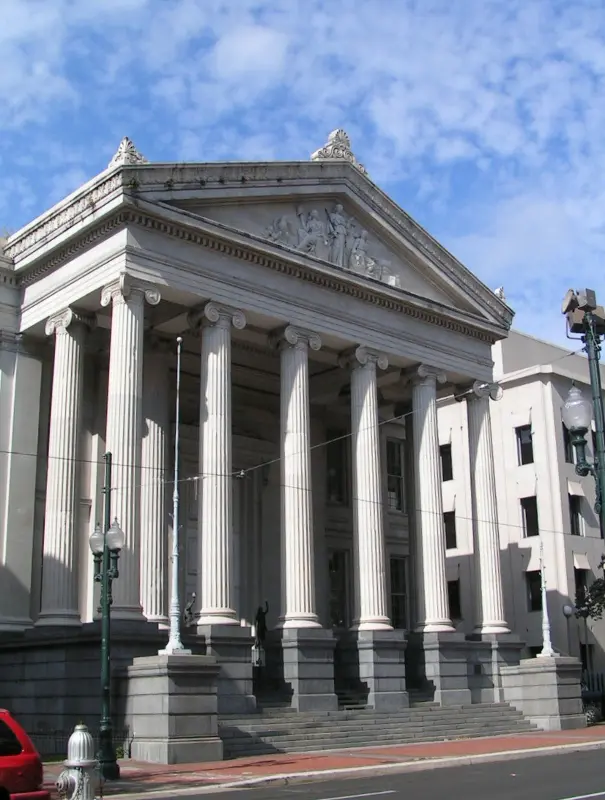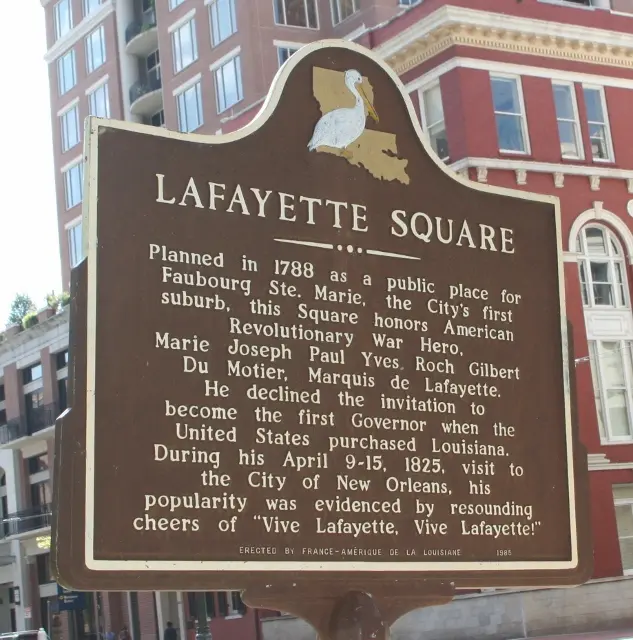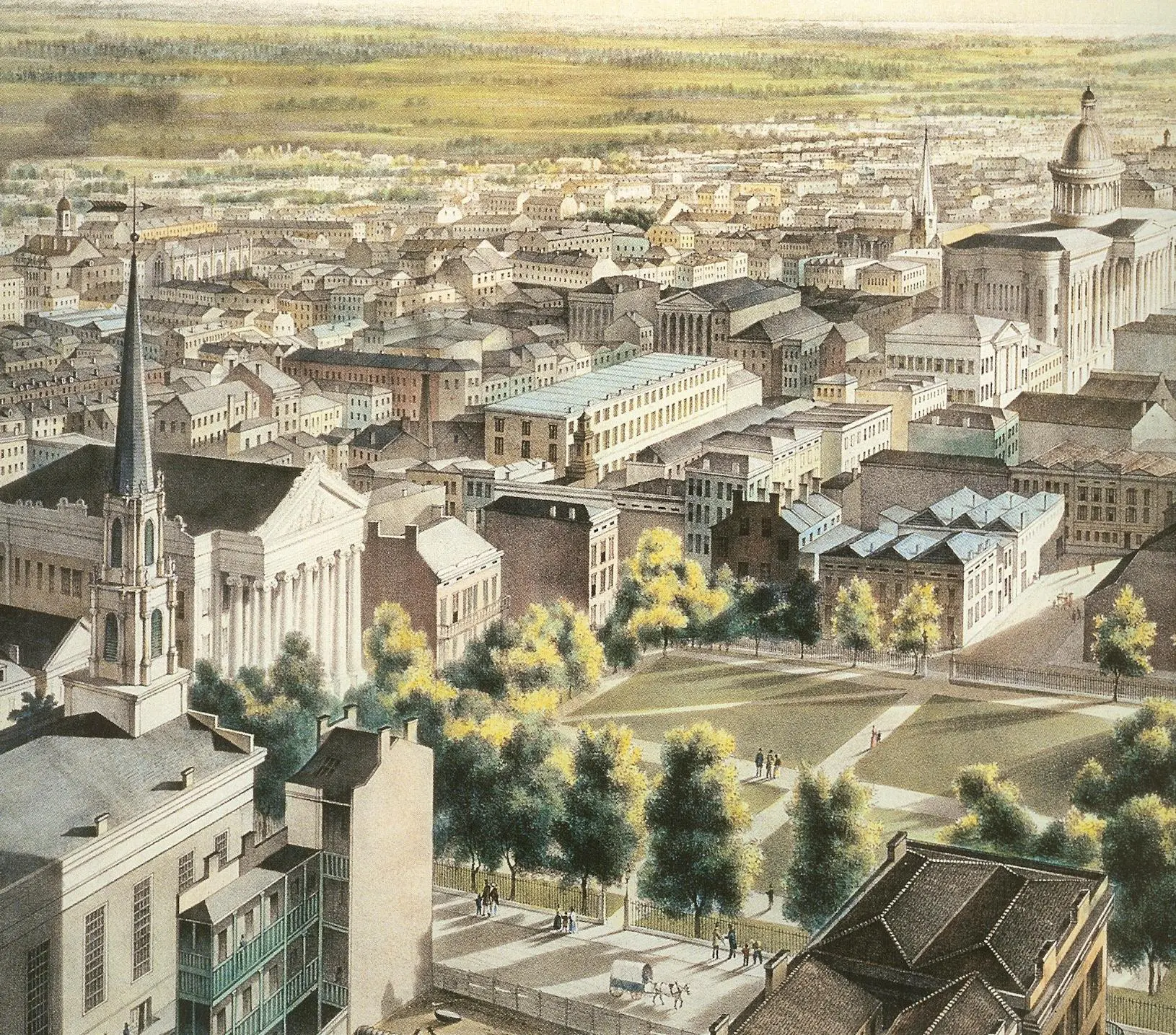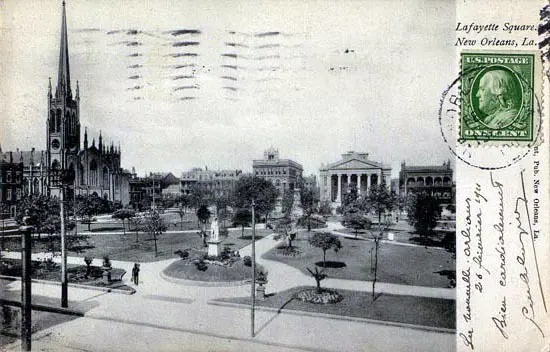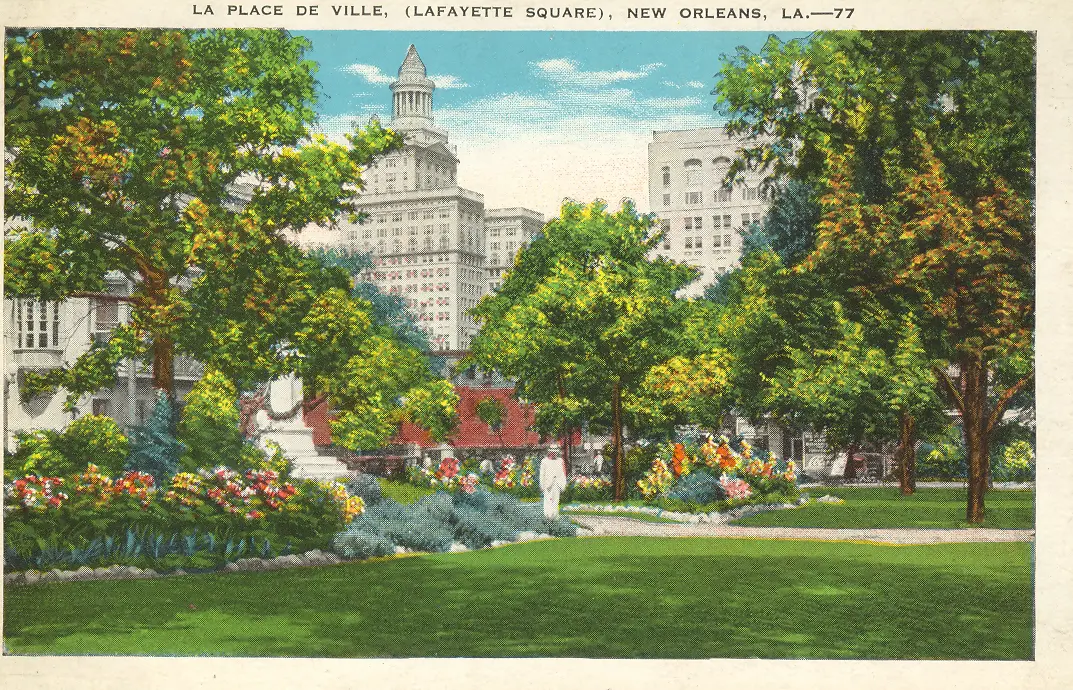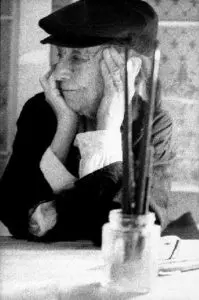History of Lafayette Square
In March of 1788, the first great fire in New Orleans destroyed several structures in the French Quarter, including the Cabildo. Shortly after the fire, Bertrand Gravier, the owner of the land currently know as the Central Business District, subdivided his land and named it the Ville Gravier. Eventually, this area became the Faubourg Ste. Marie which was the City’s first suburb. Lafayette Square, the second oldest park in the City, was founded in 1788 and was originally called “place publique.”
The Square is named after the American Revolutionary War Hero, Marie Joseph Paul Yves Roch Gilbert Du Motier, Marquis de Lafayette.
In the 18th and 19th Centuries, Jackson Square, Lafayette Square and most existing parks in the City were surrounded by high, iron fences with one gate on each side. The gates were locked at 9 pm every night and were not reopened until the following morning. During World War I, the federal government needed scrap iron, and Lafayette Square and many other New Orleans parks lost their fences to the war effort.
Lafayette Square is across the street from Gallier Hall, the former City Hall completed in 1853, a neoclassical building designed by noted architect James Gallier Sr. The building is now used as a reception hall, a theatre, and official review stand for Mardi Gras parades.
In the early 20th Century, three bronze statues were added to Lafayette Square and placed along the East/West axis of the Square. A statue of Henry Clay was moved from the intersection of Canal and Royal and placed in the center of the park, and statues of John McDonough and Benjamin Franklin were placed on St. Charles Avenue and Camp Street.
Located in the heart of the Central Business District, Lafayette Square serves the needs of many constituents. One block to the north is the Financial District with its high rise offices, hotels and financial institutions. Three sides of the Square are surrounded by Federal Institutions – the Internal Revenue Service, the Fifth Circuit Court of Appeals, the District Court and the Hale Boggs Federal Office Building. Lafayette Square is also located in the Warehouse/Arts District with its museums, restaurants, art galleries, hotels and growing residential areas. It is part of the “corridor” leading visitors to the Contemporary Arts Center, the National World War II Museum, the Ogden Museum of Southern Art and other attractions in the area.

